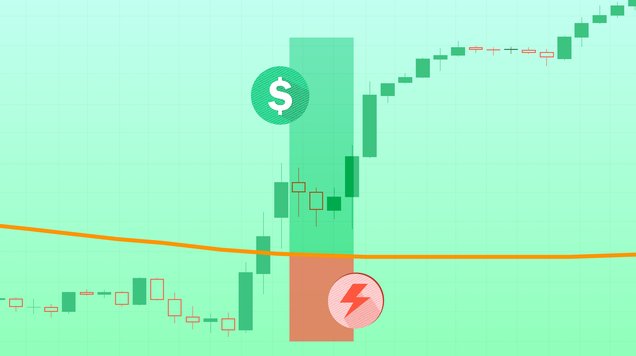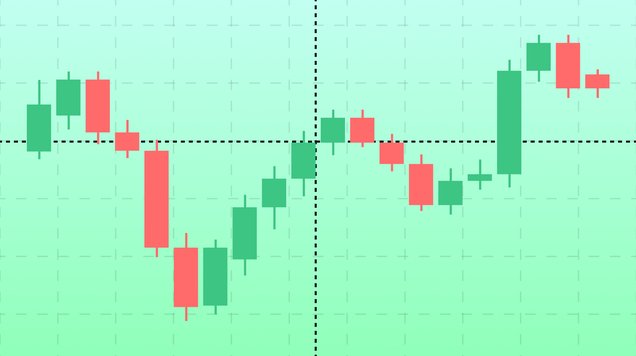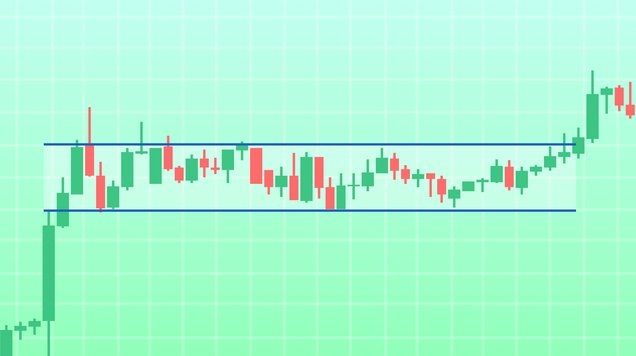Momentum Trading
Learn how to master momentum trading by reading our guide to its key principles and commonly-used risks and strategies.

Momentum trading is a strategy that focuses on capitalising on recent asset performance, favouring prevailing trends
Popular strategies in momentum trading include breakout trading, trend-following, swing trading, and counter-trend trading
Key principles of momentum trading include trend identification, technical analysis tools like Moving Averages, RSI, and MACD, risk management, and emotional discipline
Sudden reversals, overtrading, emotional factors, and market news disruptions are examples of risks involved in momentum trading
Understanding momentum trading
Momentum trading is a strategy that revolves around the concept that assets that have been performing well recently are more likely to continue performing well in the short term, while those that have been underperforming are likely to keep declining in value. It's all about catching the momentum of these price trends and using them to your advantage.
At its core, momentum trading is about capitalising on the motion of an asset's price movement, often over a relatively short time frame.
Unlike value investing (which looks for undervalued assets), or contrarian trading (which bets against prevailing market sentiment), momentum trading embraces the prevailing trend.
Momentum trading strategies
Breakout trading involves identifying key levels of support or resistance and entering a trade when the price breaks above resistance or below support levels. The idea here is to catch the early stages of a significant price move.
Trend-following focuses on assets that are in established trends. Traders aim to buy during uptrends and sell during downtrends, riding the trend until it shows signs of reversal.
Swing trading targets short to medium-term price swings within a larger trend. They aim to capture shorter-term price movements and often hold positions for several days or weeks.
Counter-trend trading tries to benefit from trend reversals. Although it goes against the traditional philosophy of momentum trading, some traders take contrarian positions and bet on a trend reversal when an asset seems to be extremely overbought or oversold. This strategy can be riskier, but potentially highly rewarding if timed correctly.
Key principles of momentum trading
To succeed in momentum trading, traders must master the art of identifying trends, employ technical analysis tools effectively, manage risks, and maintain emotional discipline.
Identifying trends: The first step in momentum trading is identifying trends. Traders use various technical indicators and charts to spot financial assets that are exhibiting strong price movement in either an upward or downward direction. These trends serve as the basis for making trading decisions.
Technical analysis: Momentum traders heavily rely on technical analysis tools and indicators. For instance, Moving Averages help to smooth out price data and identify the direction of the trend, while the Relative Strength Index (RSI) measures the speed and change of price movements. The MACD is another popular tool for analysing trends and potential reversals.
Risk management: Managing risk is paramount in momentum trading. Sudden reversals in price trends can lead to substantial losses. Traders employ risk management techniques such as stop loss orders to limit potential losses and profit targets to lock in gains. These strategies are crucial for protecting capital in volatile markets.
Psychological discipline: Momentum trading requires strong emotional discipline. The fear of missing out (FOMO) on a trending asset (or the fear of loss) can lead to impulsive decisions. Successful momentum traders adhere to their trading plans and stay disciplined in the face of market fluctuations.
Technical analysis tools often used by momentum traders
As momentum traders heavily rely on technical analysis, let’s explore some of the commonly used tools and indicators that can help you get started.
Moving Averages (MA) are used to analyse the overall trend direction and potential turning points in the price of an asset. Moving Averages smooth out price data by calculating the average price of an asset over a specific period, such as 50 days or 200 days. This moving average line is plotted on a price chart.
Relative Strength Index (RSI) is a momentum oscillator used to assess the speed and change of price movements. It helps traders identify overbought and oversold conditions on online marketplaces. RSI measures the relative strength of an asset's recent price gains in comparison to its recent price losses. It produces a value between 0 and 100, with readings above 70 indicating overbought conditions and readings below 30 signalling oversold conditions.
Moving Average Convergence Divergence (MACD) is a versatile tool used to identify trends, momentum shifts, and potential reversals in an asset's price. The MACD consists of two components: the MACD line and the signal line. The MACD line is calculated by subtracting the 26-period Exponential Moving Average (EMA) from the 12-period EMA. The signal line is a 9-period EMA of the MACD line. These lines are plotted on a price chart to help identify market trends.
Risks and challenges in momentum trading
While momentum trading can be highly profitable, it's not without its risks and challenges. Let’s look at some of the common risks.
Sudden reversals: Markets can change direction swiftly, leading to abrupt reversals in price trends. Traders must be prepared for these reversals and have strategies in place to protect their capital.
Overtrading: The temptation to constantly enter and exit positions can lead to overtrading, which can result in increased transaction costs and reduced profitability.
Emotional factors: The psychological toll of trading can be significant without mental discipline. Fear, greed, and impatience can cloud judgement and lead to poor decision-making. It is important for traders to use risk management tools and create clear plans for their objectives to enhance their mental discipline and overcome these factors.
Market news: Economic events, geopolitical developments, or unexpected news can suddenly disrupt price trends. Traders need to stay informed and adapt to changing market conditions to prevent losses.
While there are risks involved, history has shown that well-executed momentum trading strategies can be quite profitable. As you venture into the world of momentum trading, remember that success often hinges on a well-thought-out trading plan with risk management strategies, continuous learning, and the ability to adapt to ever-changing market conditions.









